How to Poach Salmon
Updated Oct 02, 2024
This post may contain affiliate links. Please read our disclosure policy.
The fastest, easiest way to poach salmon filets on the stove.
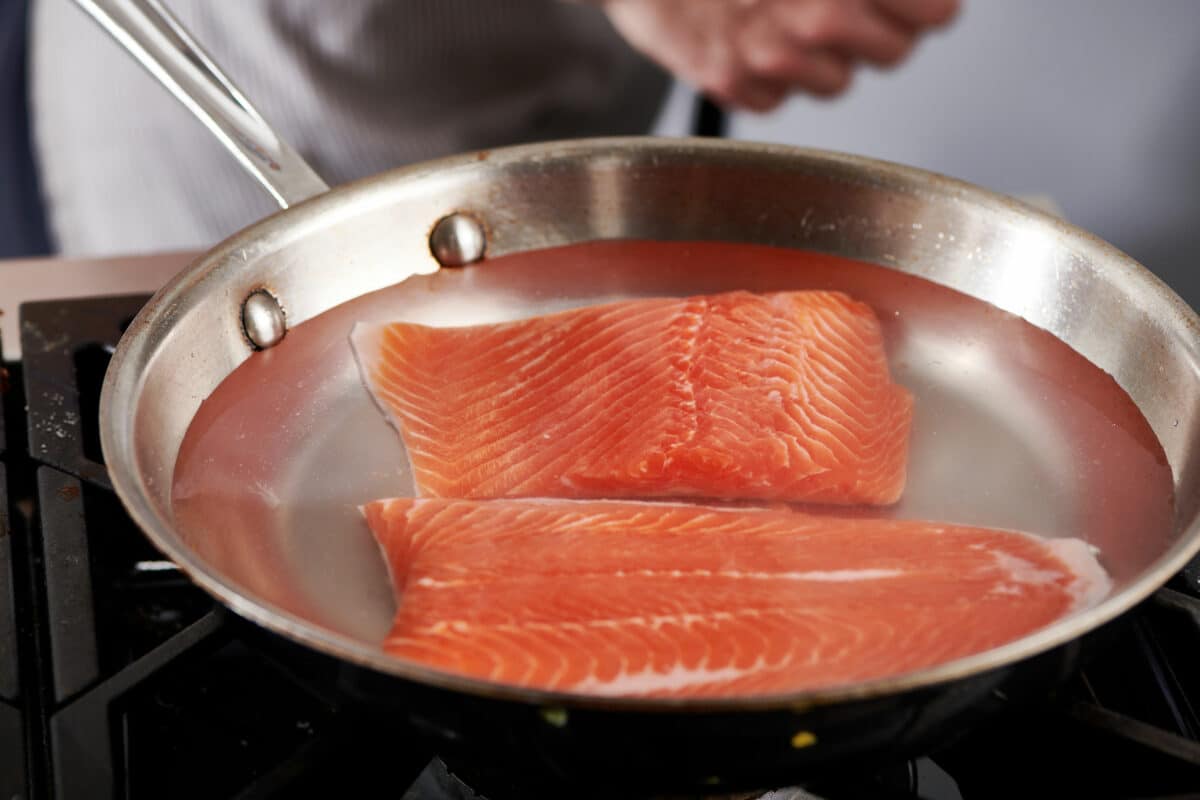
Moist, flaky poached salmon is such a simple, crowd-pleasing main course. And while you can add different things to the pot for flavor, you can simply poach salmon in salted water. It couldn’t be easier.
This recipe is for the easiest, no-frills poached salmon in water made on the stove. It’s largely a hands-off cooking method, with the salmon sitting and cooking in hot water. The method is just like the one you can use to hard-cook eggs; you bring the water to a boil, then turn off the heat and let it sit until cooked through. Poaching basically means cooking food in water (or another liquid) to cover it.
Poached salmon makes such an elegant lunch. And since it’s terrific served at room temperature, it’s also the perfect make-ahead entree. Consider pairing the salmon with a sauce. It could be a smooth, creamy sauce, like a classic Dill Sauce, or it could be more of a relish, like Tzatziki or Green Olive Tapenade. Or you can use the salmon in all kinds of dishes, such as Herbed Salmon Salad, Salmon Salad with Jalapeno Dressing, or Salmon, Arugula, and Avocado Salad.
By signing up, you agree to our Privacy Policy.
What's In This Post?
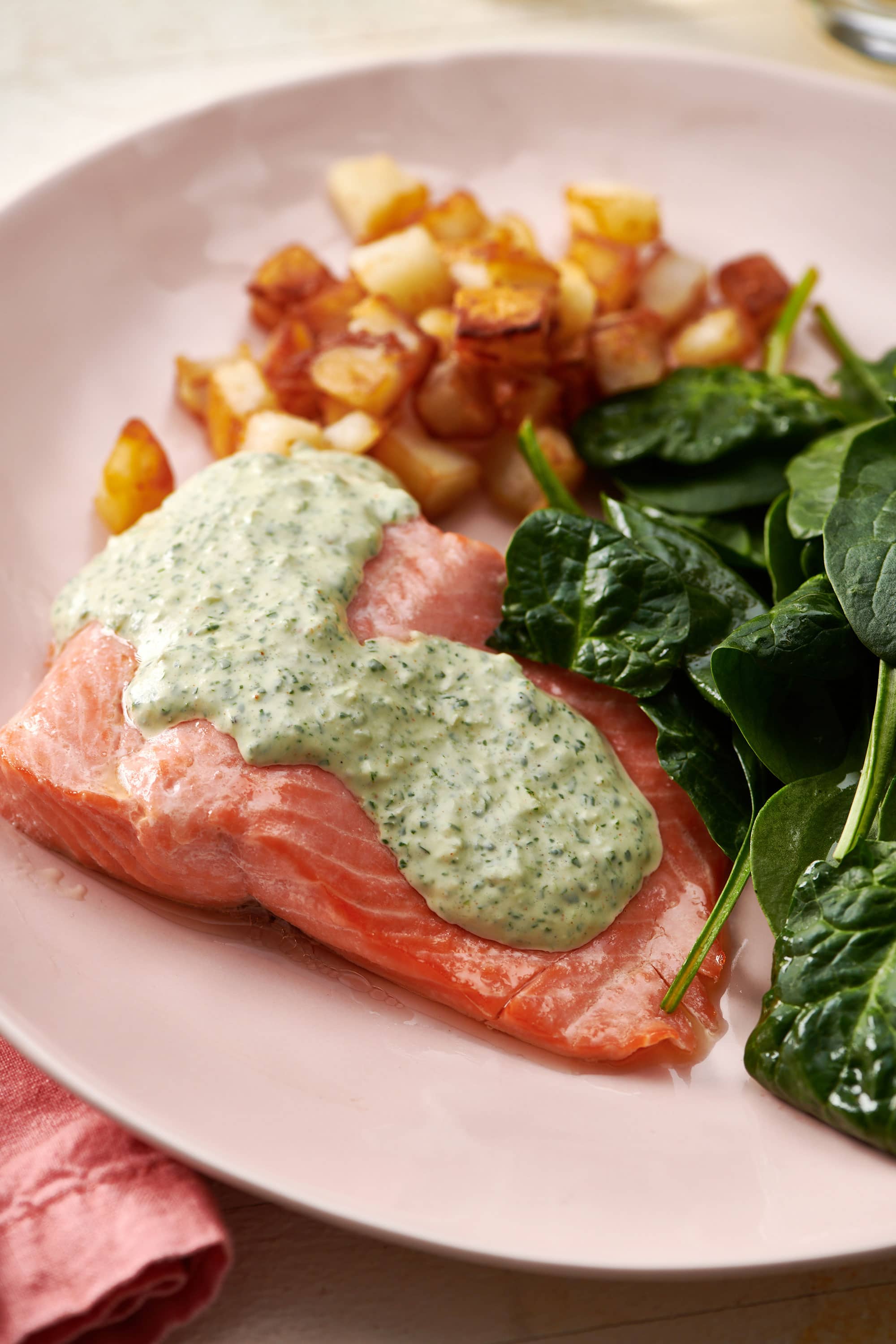
How to Poach Salmon: The fastest and easiest way to poach salmon filets in water.
Poaching Other Fish
The poaching method I describe here works with salmon, arctic, char, and any other fish you find suitable for poaching. The most common fish to poach is salmon, but other fish like trout, halibut, and sole are also good.
You may notice the raw fish in these photos has a distinctly reddish-orange hue — that’s because I actually used arctic char here instead of “regular” salmon. Arctic char has a slightly milder flavor and more delicate texture than its salmon cousin. The color gets muted when the fish is cooked, but raw or rare, arctic char is a pretty, vivid hue.
Ingredients
Additional seasonings or aromatics can be added to the water. Try peppercorns, sprigs of fresh herbs (dill and tarragon are very nice), sliced carrots, onions, celery, and so on. You can also sub in a cup or so of dry white wine for some of the water.
- Salmon fillets – Or Arctic char, of course! No matter which type of salmon you buy, you’re going to want to find skin-on salmon for this recipe.
- Water – All you really need to poach salmon!
- Kosher salt – While other ingredients are optional, you do want to add salt to the poaching water to amplify the natural flavor of the salmon. ,
How to Make Poached Salmon in Water
- Add fish, water, and salt: Place the fish skin side down (if applicable) in a deep skillet with a lid. Add water to just cover the fish. Add the salt.
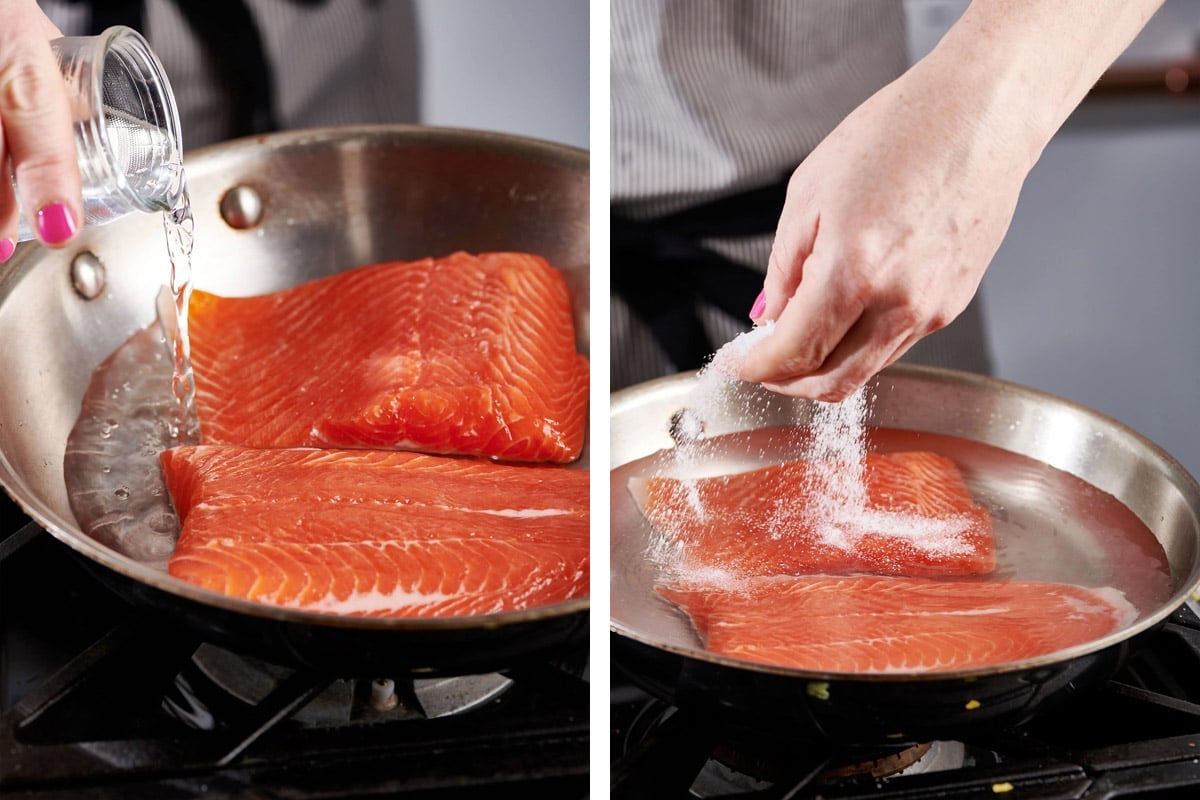
- Cook the salmon: Cover the pot and bring to a rapid simmer over high heat. As soon as the water is bubbling, remove the pot from the heat (or turn off the heat if you have a gas stove), and let the salmon sit, with the cover on, for 10 minutes.
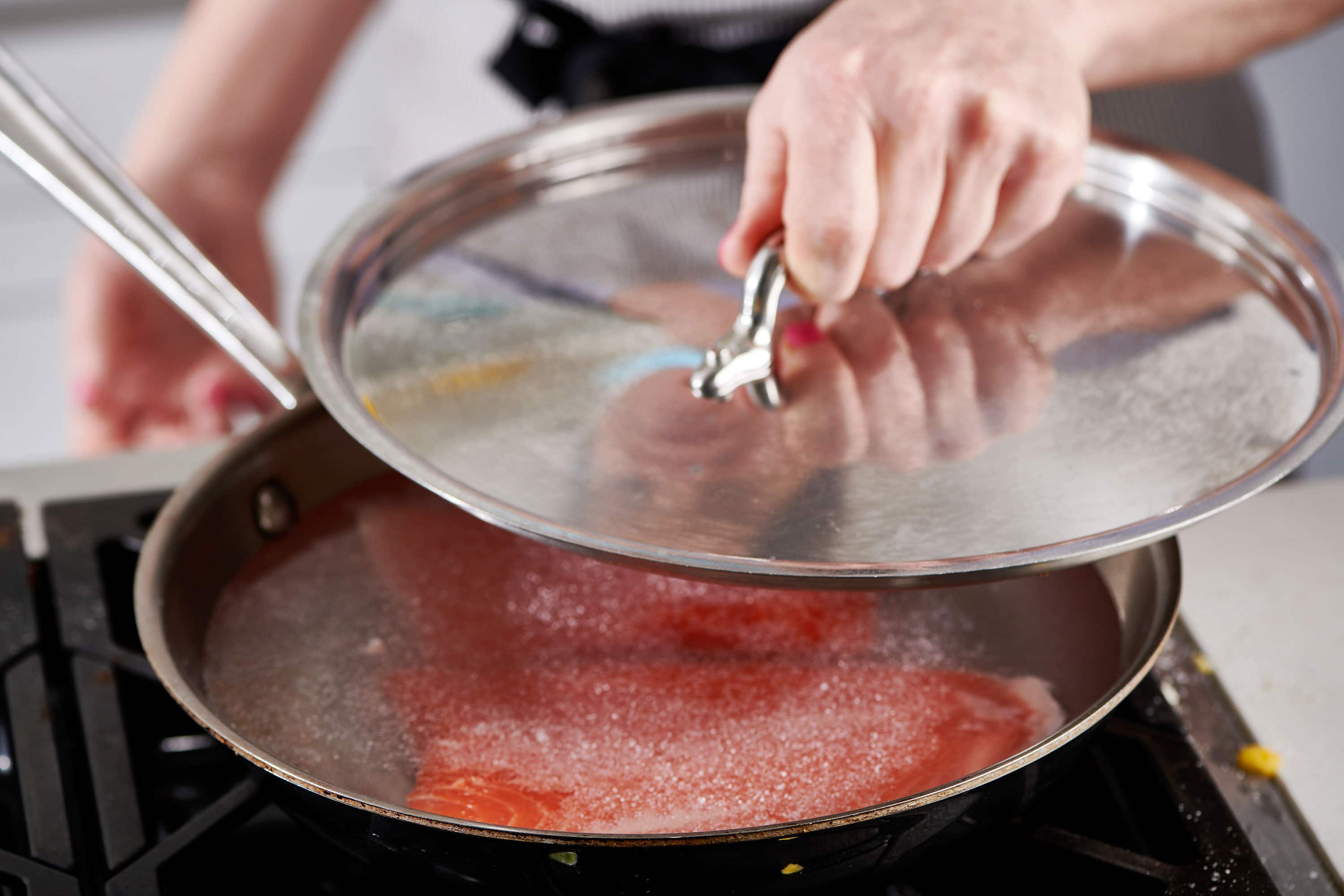
- Check for doneness: Lift the lid and check to see that it is cooked to your liking; it should be opaque throughout (no translucent parts in the center) and flake easily with a fork. You can replace the lid and let it sit in the hot liquid for a few more minutes if more well-done salmon is desired.
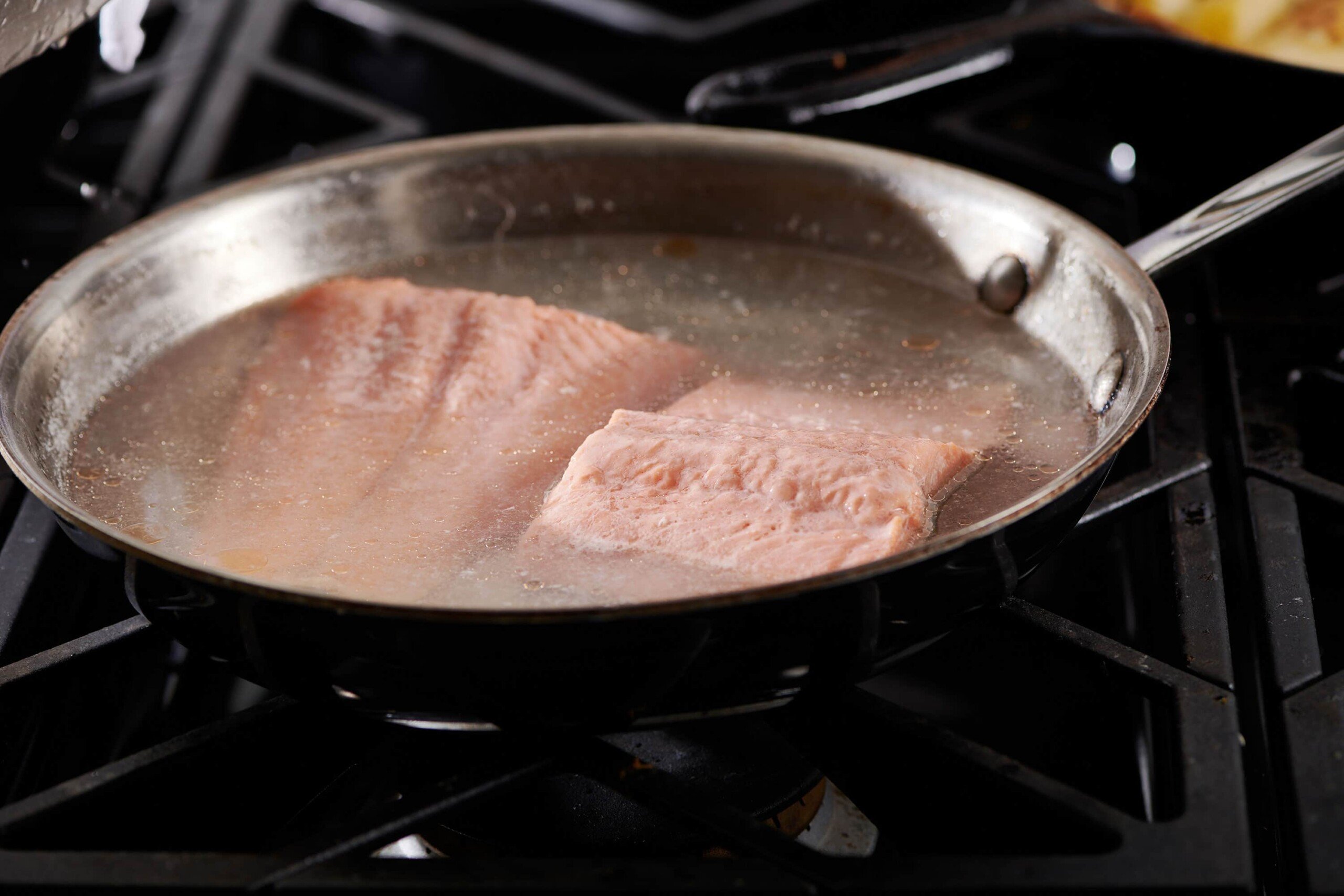
- Serve: Remove the salmon from the pan with a slotted fish spatula, or a regular spatula is just fine. Place the fish on a plate and either serve warm or cool to room temperature. Or, transfer to the fridge and cool if desired.
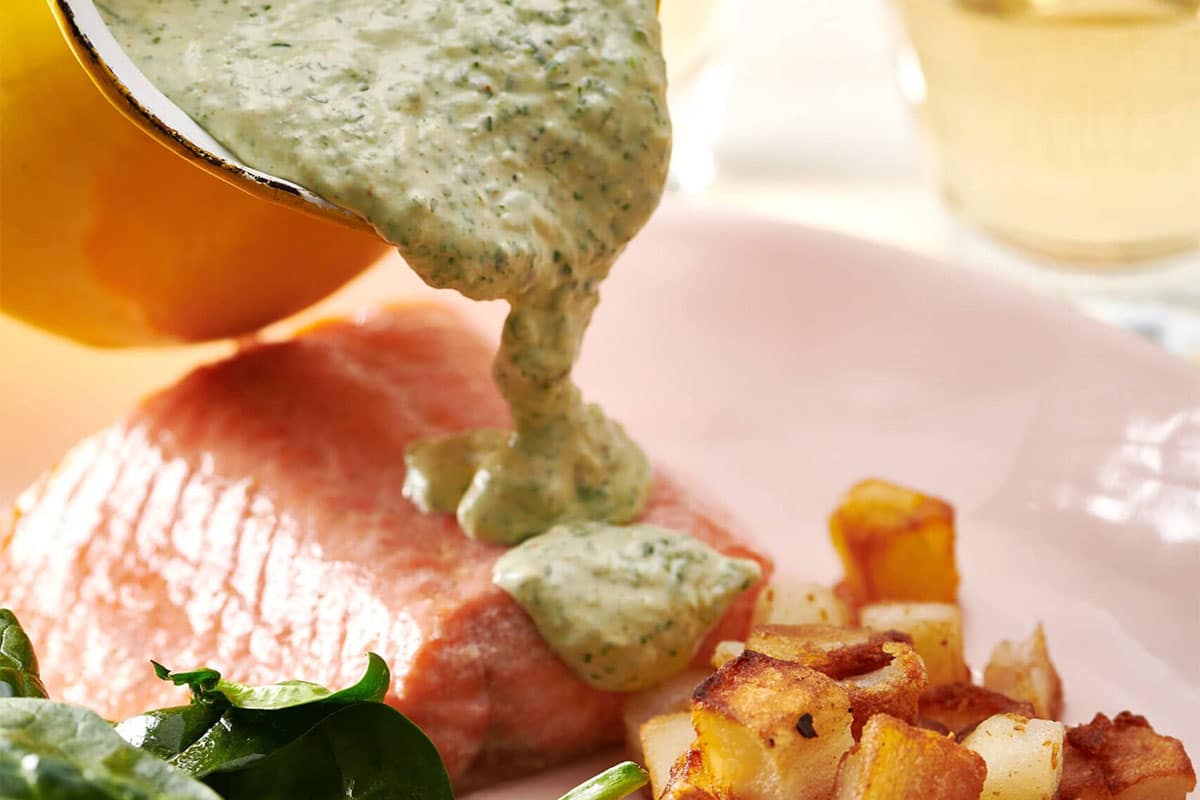
Tips for Poaching Salmon
- This recipe gives directions for poaching two 8- to 10-ounce salmon filets, but the method for cooking more or fewer fish filets is largely the same.
- The thicker the fish filets, the longer the cooking time.
- Use a deep skillet with a lid that’s large enough to hold the fish and have room for water to cover the filets. You will get the best results if you keep the fish in a single layer in the pan, so allow the amount of fish to dictate the size of the pan, and if you need to poach more salmon, do it in batches. Again, so little effort is required; this is not such a big deal.
- Should you have a fish poaching pan, hooray! These are long, usually oval pans that are specially made for poaching large filets or whole fish. They usually have a rack inside so that once the fish is cooked, you can remove it from the pan without it falling apart. They aren’t that expensive, but they do take up storage space; they’re also not necessary to make perfectly poached fish.
Chilling and Storing Poached Salmon
If you are planning to serve your salmon chilled, let it cool a bit after removing it from the water. Then, transfer it to an airtight container or a serving platter covered with plastic wrap and refrigerate until completely cooled. Serve chilled.
You can keep the poached salmon in the fridge for up to 2 days before serving. Leftovers should also be eaten within a couple of days.
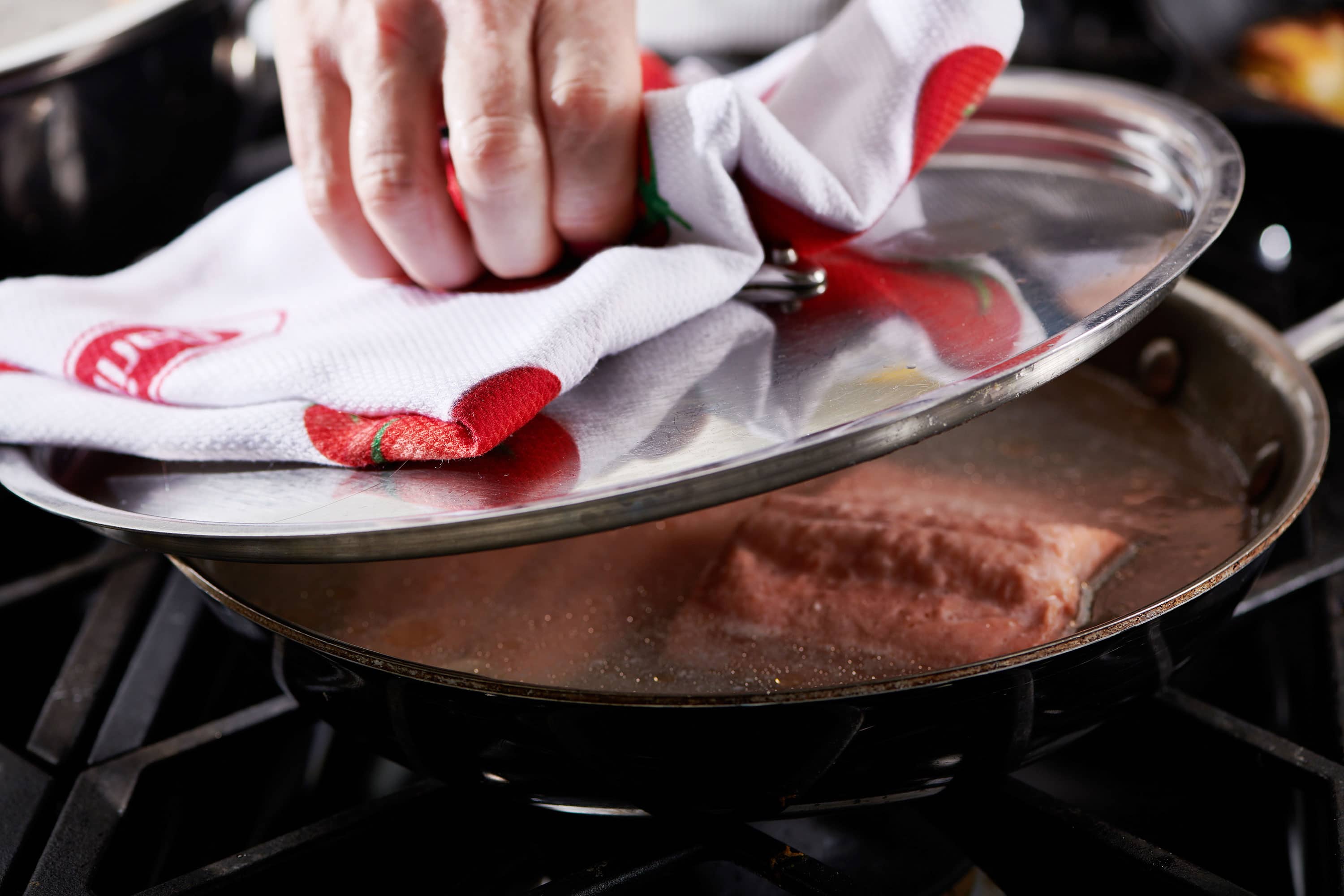
FAQs
Poaching is not only one of the easiest ways to cook salmon, but it’s also one of the healthiest. Salmon itself is super good for you, packed with lean protein and healthy Omega-3. And cooked without any added fat, as with poaching, it’s at its most healthful. There are definitely some types of salmon that are better for you and better for the planet, and some to avoid or eat sparingly; see what seafoodwatch.org has to say about that.
Keeping the skin on the fish helps hold its shape during cooking. You can remove the skin after poaching, as it will be soft and not all that texturally appealing. It’s easiest to peel off the skin once the fish has cooled to room temp or been chilled.
If you have fillets that do not have the skin, that’s fine; just use care (and a large spatula!) when removing the fish from the pan. That’s especially true if you want the filets to stay whole. If you are using the fish in an Herbed Salmon Salad, for instance, or another dish where the salmon will be chopped or flaked, this matters not a bit.
It depends on the thickness of the fish and the size of the piece. A filet might take only 10 minutes, while a large fish will take about 30 minutes. If you plan to poach it ahead of time and serve it cooled to room temperature or chilled, you’ll need to plan for that extra time.
I used just salted water here, which is obviously the easiest way to prepare poached salmon. You can also use a diluted vegetable broth or seafood broth. You can add some dry white wine to the water or the diluted broth for a nice additional flavor.
The salmon will be an opaque pink throughout and flake easily with a fork.
Sauces for Poached Salmon
Poached salmon can be eaten warm, at room temperature, or chilled. Creamy sauces like dill sauce or horseradish sauce are very popular accompaniments. But also try sauces like a tahini dressing or a chimichurri sauce instead.
Other sauces that would be great with poached salmon: slightly spicy Sriracha Sauce, vibrant Mint Basil Pesto or Spinach Parsley Pesto, carroty gingerly Japanese Restaurant Salad Dressing. (Honestly, there are few limits to what would pair up well with a beautiful piece of poached salmon.)
What to Serve With Poached Salmon

More Salmon Recipes
Pin this now to find it later
Pin It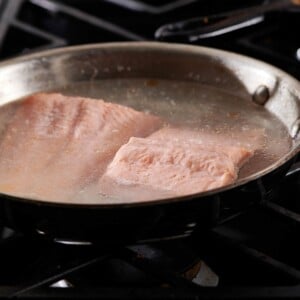
How to Poach Salmon in Water
Ingredients
- 2 (8 to 10 ounce) filets salmon (preferably with skin)
- 1 tablespoon kosher salt
Instructions
- Place the fish skin side down in a deep skillet with a lid. Add water to just cover the fish. Add the salt.
- Cover the pot and bring to a rapid simmer over high heat. As soon as the water is bubbling, remove the pot from the heat (or turn off the heat if you have a gas stove), and let the salmon sit for about 10 minutes. Lift the lid and check to see that it is cooked to your liking; it should be opaque throughout (no translucent parts in the center) and flake easily with a fork. You can replace the lid and let it sit in the hot liquid for a few more minutes if more well-done salmon is desired.
- Remove the salmon from the pan with a slotted fish spatula, or a regular spatula is just fine. Remove the skin carefully if you plan to serve it warm. If not, you can remove the skin when the salmon has cooled to your serving temperature.
- Place on a plate and either serve warm or cool to room temperature. Or, when the salmon has cooled a bit, transfer it to an airtight container and refrigerate until completely cooled, then serve chilled. You can keep the poached salmon in the fridge for up to 2 days before serving.
Notes
- This recipe gives directions for poaching two 8- to 10-ounce salmon filets, but the method for cooking more or fewer fish filets is largely the same. Add a few minutes to the prep if you are poaching a larger piece of fish.
- Use a deep skillet with a lid, large enough to hold the fish with room for water to cover the filets. You will get the best results if you keep the fish in a single layer in the pan, so allow the amount of fish to dictate the size of the pan, and if you need to poach more salmon, do it in batches. Again, so little effort is required; this is not such a big deal.
- Should you have a fish poaching pan, hooray! These are long, usually oval pans that are specially made for poaching large filets or whole fish. They usually come with a rack inside so that once the fish is cooked, you can remove it from the pan without it falling apart. They aren’t that expensive, but they do take up storage space; they’re also not necessary to make perfectly poached fish.
- Additional seasonings or aromatics can be added to the water, such as peppercorns, sprigs of fresh herbs (dill and tarragon are very nice), sliced carrots, onions, celery, and so on. You can also sub in a cup or so of dry white wine for some of the water.

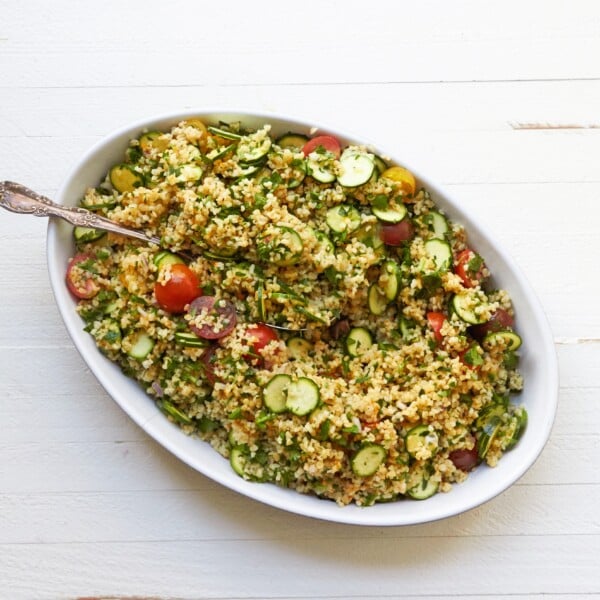
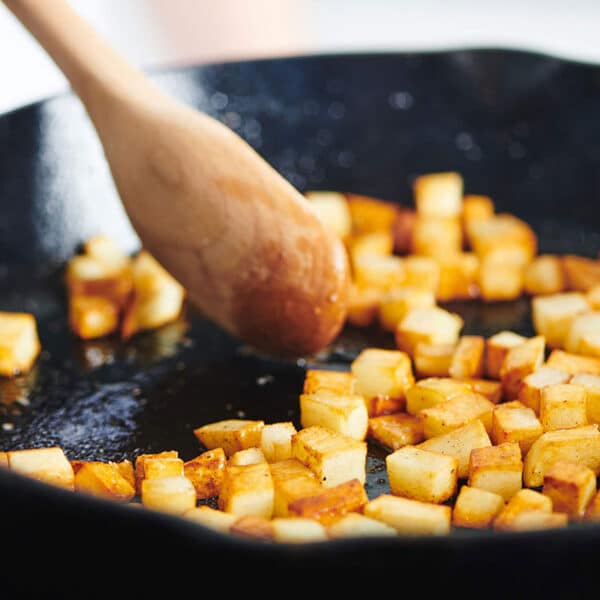
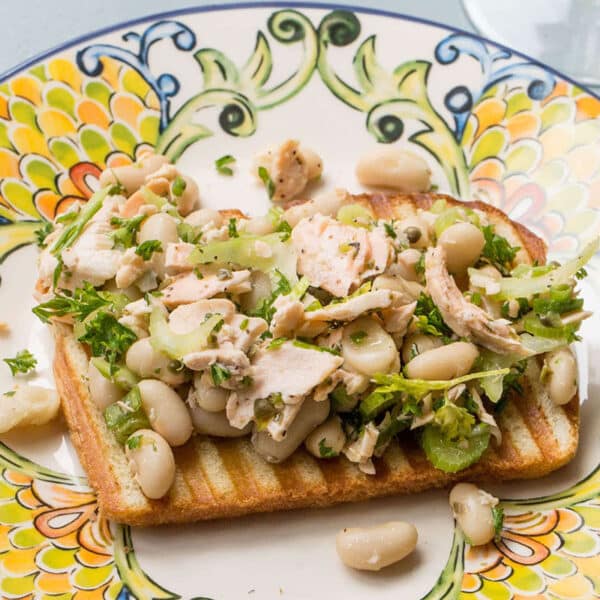
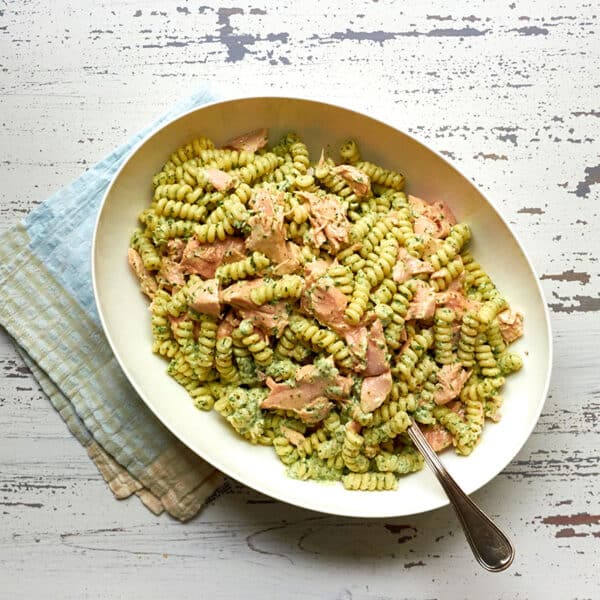
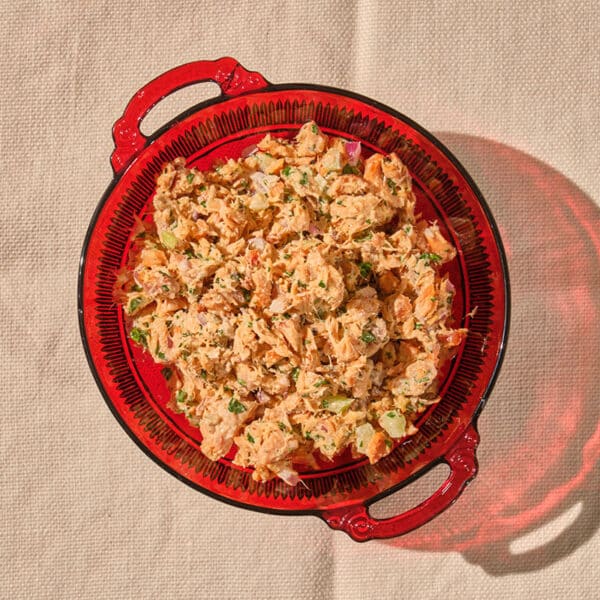
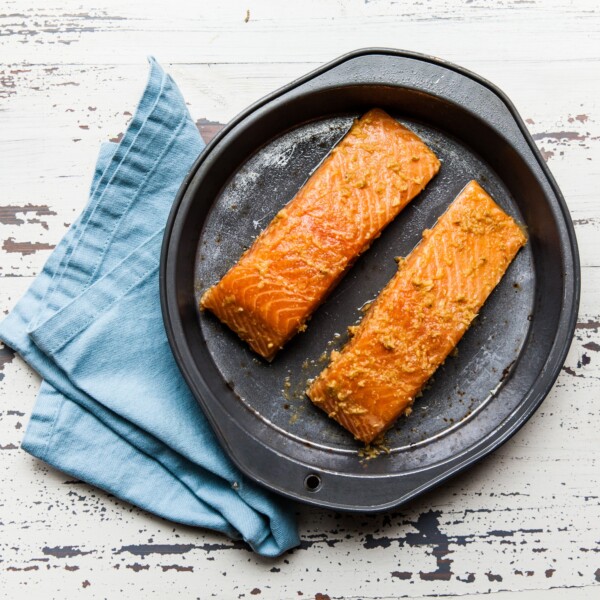









I love how quickly this poach salmon recipe came together! Thanks for this easy instructions!